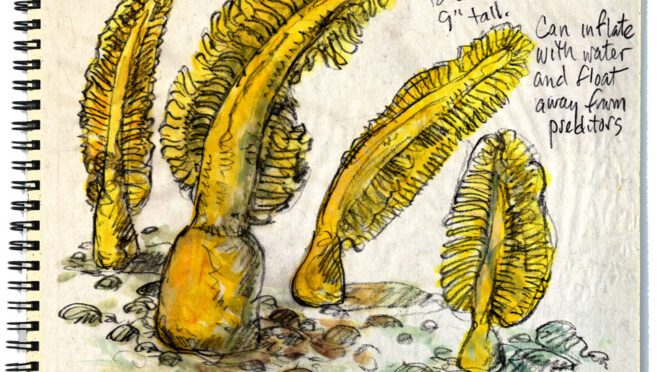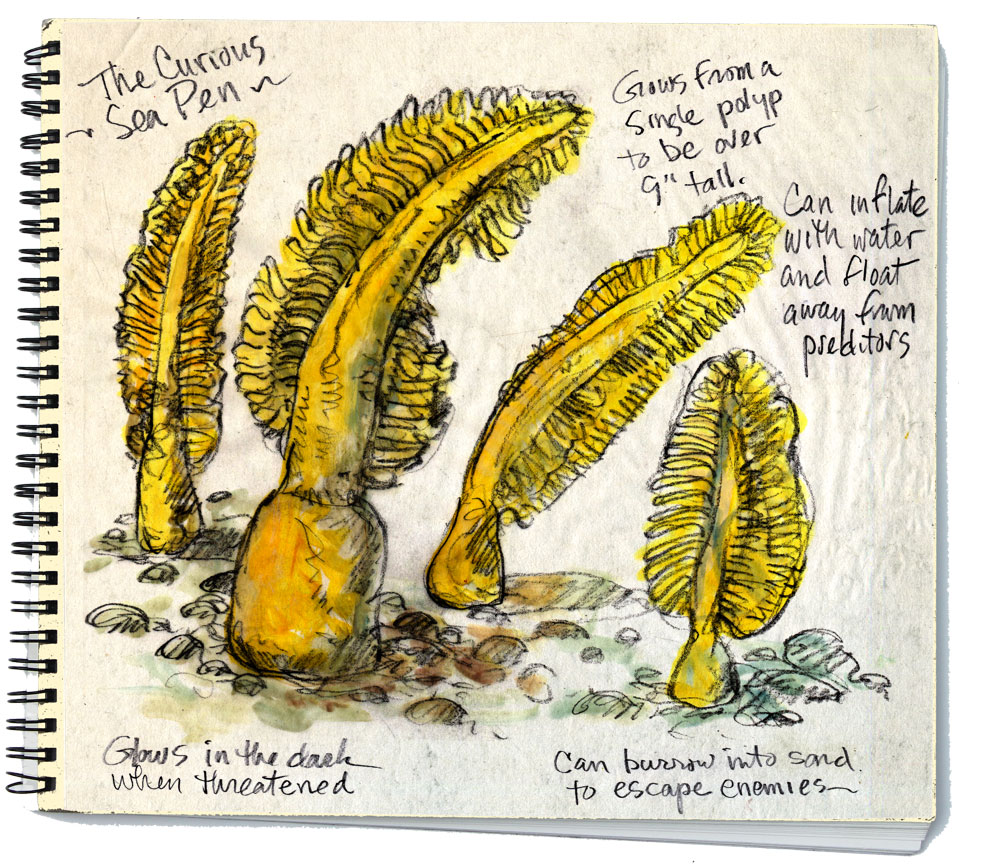If I told you the Sea Pen is a soft coral made up of hundreds of creatures, that it can swim, burrow and clone itself possibly forever and lives here in the Salish Sea, would you believe me? Sea Pens begin life as a single polyp from a fertilized egg. As it grows, it clones itself into other polyps that are all genetically identical – yet take on individual roles, such as being water pumps, feeding polyps and underground base or stalk polyps. They all work together to create a single beautiful living creature. Fields of sea pens live together on calm sandy or muddy sea bottoms from lower tide level to about 500 feet, looking very much as if old quill pens have been stuck in the muck. There are a lot of them, and some studies have counted up to two dozen sea pens per square meter.
Lots of sea pens translates into lots of predators, and include leather stars, sunflower stars and at least four species of nudibranchs, species that are even more exotic-looking than the sea pen. When one of these attacks, the sea pen has multiple defenses. Using the same bio-luminescent chemical fireflies have, it immediately glows bright greenish-yellow, possibly to scare the predator or warn nearby sea pens there’s trouble afoot. It can then pump itself up with water (altogether now, polyps), detach itself (up anchor, polyps) and float away to safety). Or, the polyps tack, quickly deflating the body and burrowing to safety underground. How all this happens, at least in my mind, is organization and cooperation beyond the boats I’ve been on – and yet it’s carried out by tiny polyps lacking a captain shouting orders.
Larry paints and blogs about wild places at larryeifert.com. His work can be seen in many national parks across America.

